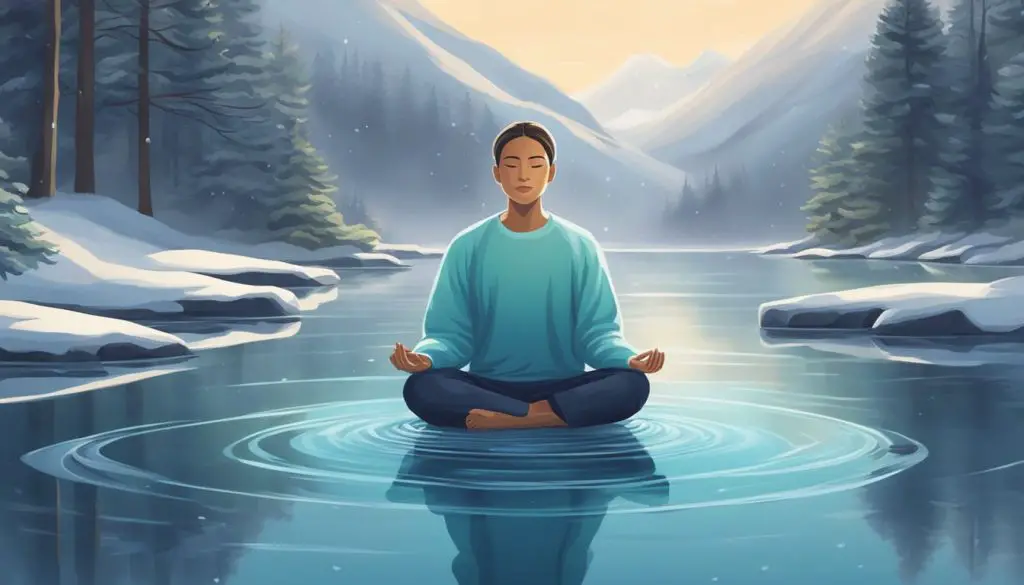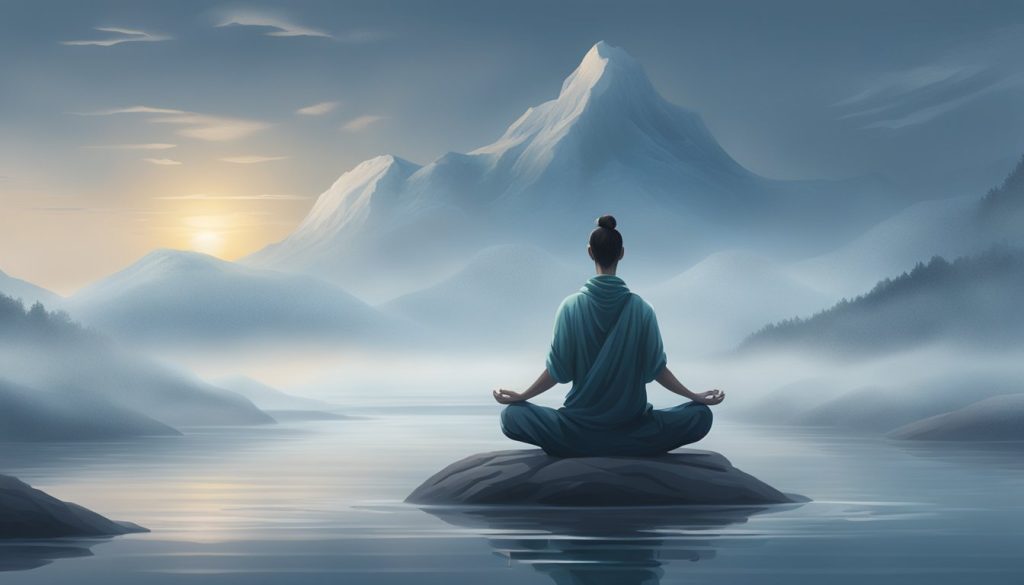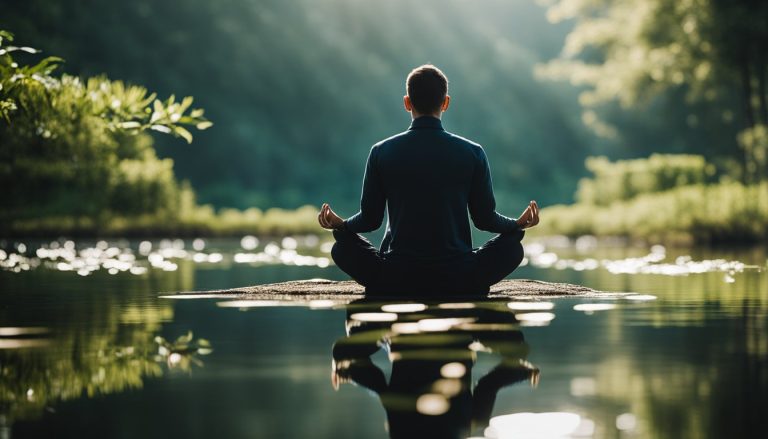Is It Good to Meditate in Cold Water? Exploring the Benefits and Techniques
Meditating in cold water, a practice that combines the ancient tradition of meditation with the more modern iteration of cold water therapy, is gaining attention for its potential to enhance mental and physical health.
The contrast between the calming nature of meditation and the invigorating shock of cold water immersion might seem counterintuitive at first. However, emerging science suggests that this combination could lead to reduced stress levels and enhanced feelings of well-being, as evidenced by studies involving healthy volunteers.

With its roots in practices such as the cold water exposures of the Wim Hof Method and the mindful acceptance of discomfort, this hybrid activity could present a novel way to boost resilience against stress and pain.
Intriguingly, research indicates that individuals practicing mindfulness meditation in conjunction with cold exposure could increase their tolerance to pain, such as the discomfort experienced during a cold pressor task. This kind of therapeutic synergy could suggest a wider array of benefits yet to be fully understood by science but embraced by those seeking holistic wellness practices.
Key Points
- Cold water meditation may reduce stress and enhance well-being.
- It combines the serenity of meditation with the vigor of cold water therapy.
- Studies show potential increased pain tolerance and mental health benefits.
Table of Contents
Understanding Cold Water Meditation
When exploring the concept of meditating in cold water, I’ve discovered that this practice combines the mental discipline of meditation with the physiological effects of cold exposure.
The Science Behind Cold Water Exposure
Physiological Responses:
- Vasoconstriction: My immersion in cold water triggers the constriction of my blood vessels.
- Endorphin Release: I experience a release of endorphins, which are natural painkillers and mood enhancers.
- Metabolic Increase: My metabolic rate may increase to generate more body heat.
Therapeutic Benefits:
- Reduces inflammation: The cold water can lower my body’s inflammation.
- Stress Tolerance: Regular exposure can improve my resilience to stress.
- Immune Response: Some studies suggest a positive effect on the immune system.
Cold water immersion, combined with meditation, may heighten my psychological and physiological responses, enhancing the benefits of both practices.
Historical Perspectives
Ancient Practices:
- Ancient Greece: Historical texts indicate that ancient Greeks used cold baths for health, which aligns with my practice of cold water meditation in seeking therapeutic benefits.
Modern Practices:
- Wim Hof Method: Popularized by Wim Hof, this method involves controlled breathing, cold exposure, and meditation. I find that it emphasizes a mind-over-matter philosophy, which promotes the idea that I can influence my body’s autonomic processes.
Drawing from these historical and modern frameworks, I conclude that cold water meditation is an interplay between age-old wisdom and contemporary understanding, offering a unique path to wellness.
Physical and Mental Health Benefits

When I engage in meditation combined with cold water exposure, I’ve found that it impacts both my body and mind in several distinct ways. My personal experiences align with some scientific findings which suggest a range of health benefits from this practice. Let’s dive into specifics.
Boosting the Immune System
I’ve noticed that regular meditation in cold water seems to strengthen my immune response. Research points to increased white blood cell counts, which fight off illness. It’s as if the cold water acts as a stressor that kick-starts my body’s defense system into higher gear.
Circulation and Heart Health
Experiencing the chill of cold water boosts my circulation, which is beneficial for my heart. I feel invigorated as my heart rate increases temporarily during the dip, followed by a decrease in resting heart rate over time with consistent practice.
Pain, Recovery, and Muscle Soreness
The combination of meditation with the cold can help with recovery after exercise. I find that it diminishes my muscle soreness, and there’s data suggesting it can reduce pain through the body’s natural analgesic response to cold exposure.
Weight Loss and Metabolism
While I’m cautious about weight loss claims, it’s interesting to note that some theories propose that cold water immersion can increase metabolism. The body burns calories to maintain core body temperature, potentially aiding in weight management.
Mental Health and Mindfulness
For me, the most profound effect of meditating in cold water relates to my mental health. Not only does it improve my mood and increase mindfulness, but it also helps reduce feelings of anxiety and depression. I attribute this to the release of endorphins and the practice of focused attention during the experience.
Practical Guidelines and Considerations

Before diving into cold water meditation, it’s crucial to understand the practice’s nuances. It combines the benefits of meditation with cold hydrotherapy, but navigating the potential risks and ensuring safety is of the utmost importance.
How to Incorporate Cold Water Meditation
To begin incorporating cold water meditation into my routine, I find a comfortable setting where I can safely immerse myself in cold water. This could be a natural body of water or an ice bath prepared at home. It’s essential that I acclimate my body gradually to the cold:
- Start with short durations (1-2 minutes) and progressively increase.
- Use breathing techniques to maintain calm—controlled, deep breathing helps to manage the body’s response to cold stress.
- Wearing a wetsuit can help with longer sessions, offering insulation while I focus on meditation.
Safety Measures and Risks
Understanding and mitigating the risks involved with cold water meditation is crucial for my safety. Here are key safety measures I always adhere to:
- Avoid swimming alone: Always have a buddy or someone who can monitor me.
- Know the signs of hypothermia, which include uncontrolled shivering, drowsiness, and slurred speech. If any symptoms occur, I exit the water immediately.
- Medical conditions: Consult with a healthcare provider if I have any pre-existing medical conditions.
To prevent risks such as shock or loss of motor control, I make sure to:
- Enter the cold water slowly to allow my body to adjust.
- Limit the exposure time to prevent hypothermia—never pushing beyond what feels safe.
- Warm up gradually after exiting the water, avoiding hot showers immediately to prevent shock.
Maximizing Outcomes

When I endeavor to enhance my mental and physical well-being, I consider methods that can effectively amplify the benefits of my practices. Among these, incorporating cold water therapy with meditation has shown potential for maximizing outcomes.
Combining Meditation with Cold Water Therapy
When I merge the calm of meditation with the invigoration of cold water therapy, it’s crucial to understand how the two enrich each other. Cold showers or swims in cool bodies of water directly impact my body, potentially accelerating muscle recovery and invoking a state of alertness. Breathing techniques, central to both practices, allow me to withstand the shock of the cold, thereby training my body to handle stress better. Here’s how I integrate the two practices:
- Meditation prep: Before stepping into the cold, I meditate to calm my mind and ready my body, focusing on deep breathing to fortify my resolve.
- Cold exposure: I start with cold showers, staying composed and using my meditation-trained focus to handle the discomfort.
- Post-cold reflection: After the cold exposure, I return to meditation to consolidate the experience, bringing my body into a restorative state.
Tracking Progress and Listening to Your Body
To truly maximize outcomes, I track my progression meticulously. This implies not only marking down how long I can comfortably remain in cold water but also noting the quality of my meditative state before and after the session. Here’s a simple log format I use:
| Date | Meditation Duration (Pre-Cold) | Cold Exposure Time | Meditation Duration (Post-Cold) | Notes |
|---|---|---|---|---|
| 2024-03-19 | 10 minutes | 3 minutes | 10 minutes | Felt more focused today. |
More importantly, I listen attentively to my body’s signals. If I notice undue strain or discomfort beyond what’s typical for a training session, I take it as a cue to ease off and perhaps shorten the cold exposure next time. The science is clear that recovery times are important, and my attention to bodily feedback ensures I’m not overdoing it and am instead fostering sustainable growth.
Frequently Asked Questions
I’ve put together some common questions about integrating cold water into a meditation routine.
These insights are based on both research and personal experiences shared by meditators.
What are the benefits of incorporating cold showers into a meditation routine?
Cold showers can potentially improve circulation, reduce muscle inflammation, and increase alertness. When combined with meditation, these physical benefits may lead to a more focused and invigorating practice.
Can cold water immersion enhance the spiritual aspect of meditation?
Some practitioners find that meditating in cold water heightens their spiritual experience by adding a sensory dimension that promotes presence and awareness. This can potentially deepen the meditative process.
What is the optimal timing for meditation in relation to taking a cold shower?
Meditating immediately after a cold shower might help consolidate the sense of alertness and invigoration the cold induces. Alternatively, some prefer to meditate before to prepare themselves mentally for the challenge of a cold shower.
How does exposure to cold water affect mental clarity and mindfulness?
Cold water exposure requires a strong focus to overcome the initial shock and discomfort, which can train the mind to maintain clarity and mindfulness under stress.
Are there any specific techniques for meditating in cold water?
A common technique involves regulated breathing. It also involves mindful acceptance as the cold sensation is encountered. This helps manage the body’s natural response to cold and sustain the meditation.
What are the physiological responses to meditating in cold water and their impacts on well-being?
Exposure to cold water induces a fight-or-flight response. This includes increased heart rate and breath rate.
Over time, meditating in cold can teach the body to modulate these responses. This can potentially contribute to greater resilience and an improved sense of well-being.







